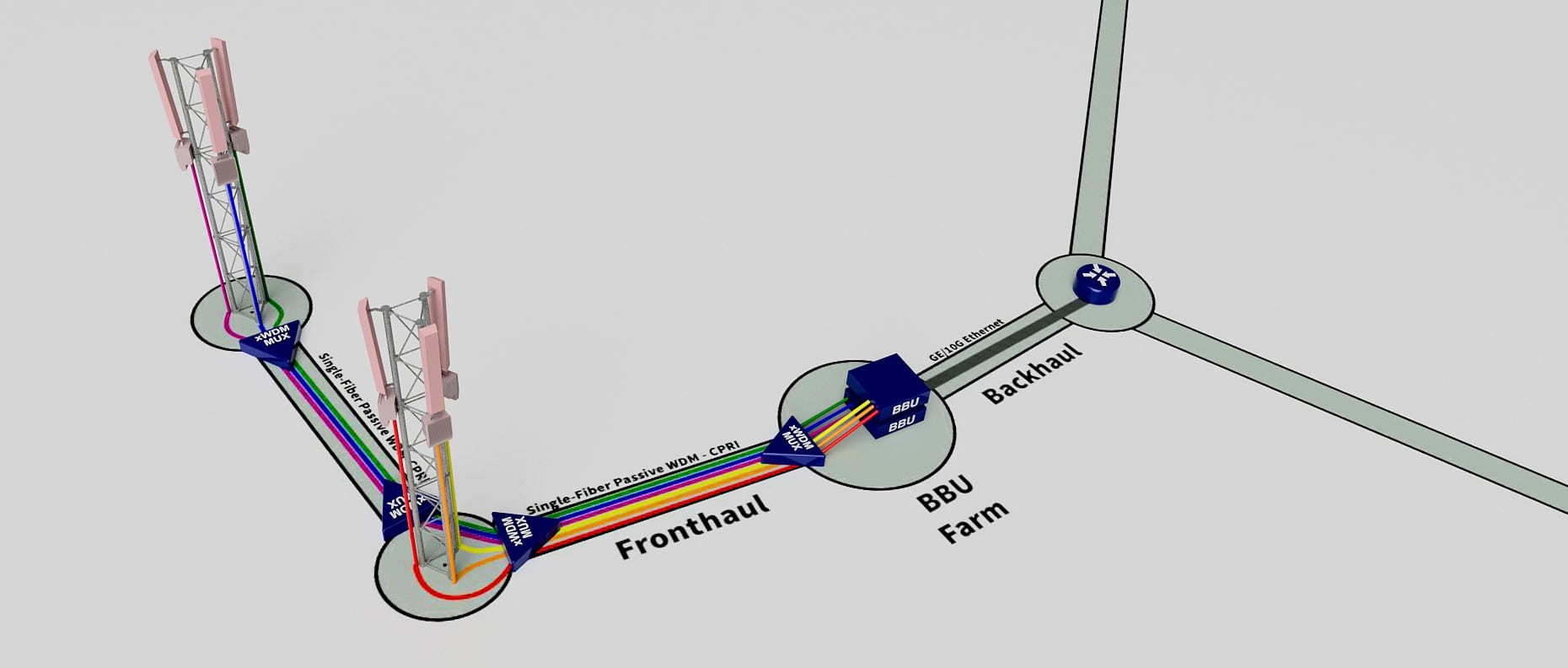
CPRI vs OBSAI
What are origins & mine differences CPRI vs OBSAI? Standards and used bit-rates for both competing protocols used in modern fronthaul networks? “In our days” optical fibre is used to connect base station baseband unit (BBU) and remote radio head (RRH) units. BBUs and RRHs are connected via general-purpose interfaces, most commonly the Common Public Radio Interface (CPRI), or in some cases the Open Base Station Architecture Initiative (OBSAI).
In October 2002, Nokia, NEC, LG and Samsung launched the Open Base Station Standard Initiative (OBSAI) initiative. The organization was tasked with standardizing the architecture of wireless base stations, internal interfaces, control modules, transmission modes, baseband band and radio frequencies. However, the possibilities of OBSAI were limited to the fact that standards were developed in the mainstream of base stations of only one manufacturer – Nokia.
In June 2003, Ericsson, Huawei, NEC, Nortel Networks and Siemens created an alternative organization for the development of the Common Public Radio Interface (CPRI), it also began developing universal standards for key internal interfaces with an emphasis on interfaces between the base frequency band and radio frequencies. It included base station suppliers, which only increased its importance. NEC moved to the CPRI camp less than a year after its foundation; At the moment, more than 100 manufacturers have joined the organization supporting CPRI.
CPRI APPROACH:
According to the CPRI standards, the base station consists of two parts: a BaseBand Unit (BBU), or a Radio Equipment Control (REC) unit, and a Radio Frequency Unit (RRU) or radio access equipment Equipment, RE). The main distinguishing feature of CPRI interfaces is the separation between the base frequency band and the radio frequency band. Small size, ease of installation and a variety of functions with low power consumption allows you to use the BBU on existing objects and support the extension in the cascade connection mode. Due to its small size and weight, the RRU is easily mounted on a pole or wall near the antenna, maximizing its radio coverage. CPRI standardizes interfaces between the BBU and RRU, ensuring compatibility of equipment from different manufacturers.
OBSAI APPROACH:
OBSAI divides the base stations into four main modules: a transmission, processing, radio frequency and control module. The first provides external standard network interfaces, including IP and ATM; in the second, base frequency signals are processed; the third receives, transmits and amplifies RF signals and converts them from digital to analog; the fourth provides system synchronization, management and configuration of base station equipment, monitors the operating status of other modules, and generates reports to the network element management system.
CPRI AND OBSAI BIT RATES:
CPRI bit rates are referred to as “option#”. There are now 10 options, according to CPRI Specification V7.0:
| Option | Bit Rate (Gbps) | Line Coding |
|---|---|---|
| Option 1 | 0.6144 | 8B/10B |
| Option 2 | 1.2288 | 8B/10B |
| Option 3 | 2.4576 | 8B/10B |
| Option 4 | 3.0720 | 8B/10B |
| Option 5 | 4.9152 | 8B/10B |
| Option 6 | 6.144 | 8B/10B |
| Option 7 | 9.8304 | 8B/10B |
| Option 7A | 8.11008 | 64B/66B |
| Option 8 | 10.13760 | 64B/66B |
| Option 9 | 12.16512 | 64B/66B |
| Option 10 | 24.33024 | 64B/66B |
4 OBSAI bit rates are defined:
| Bit Rate (Gbps) | Line Coding |
|---|---|
| 0.768 | 8B/10B |
| 1.536 | 8B/10B |
| 3.072 | 8B/10B |
| 6.144 | 8B/10B |

